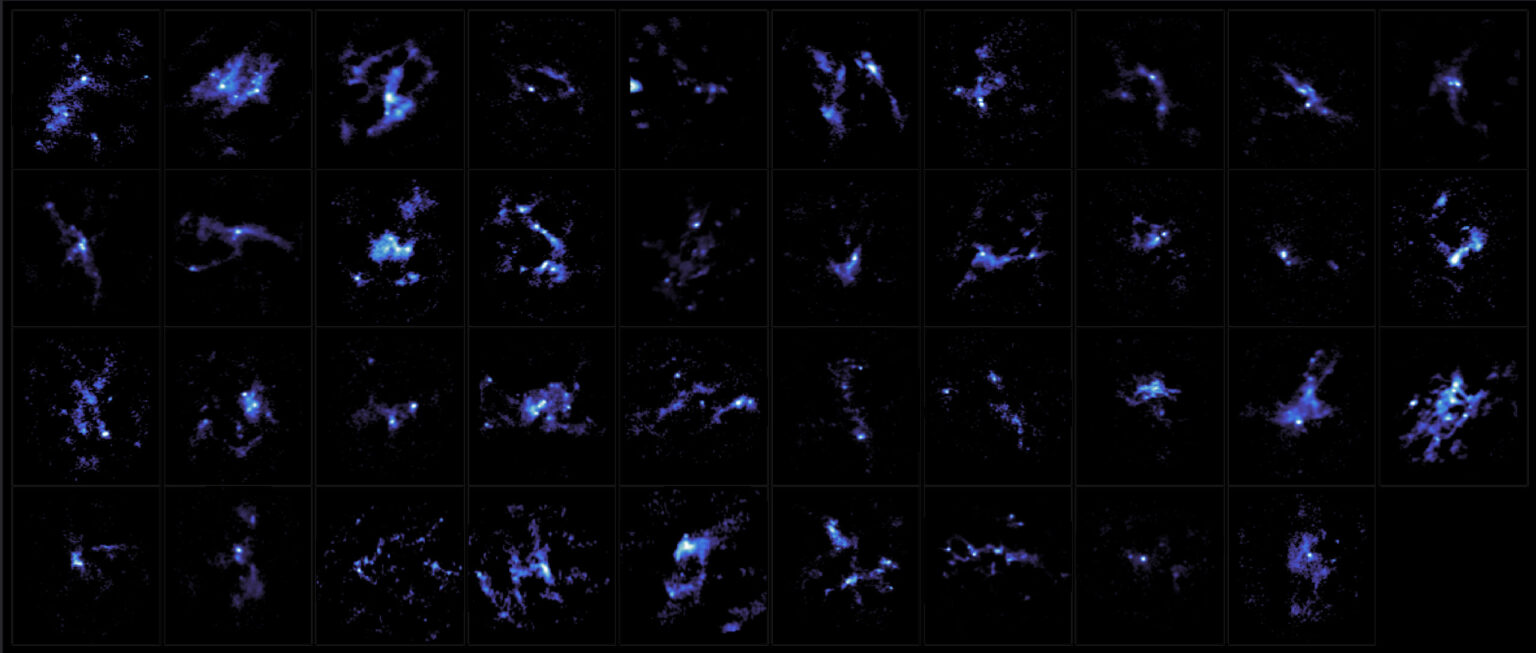Using the Atacama Large Millimeter/submillimeter Array (ALMA) radio telescopes, an international team of astronomers has discovered over 800 “stellar seeds” located within massive gas and dust clouds. This finding is of great significance for a better understanding of the process of high-mass star formation, which plays a crucial role in the creation of the building blocks of life.

The discovery was made during the study of 39 massive cosmic clouds, also known as Infrared Dark Clouds (IRDCs). These clouds are believed to serve as nurseries for high-mass celestial objects.
Thanks to its unparalleled sensitivity and resolution, ALMA was able to detect over 800 molecular cloud cores that will give rise to new stars in the future. This is currently the largest sample ever found by astronomers.
Interestingly, according to the researchers’ calculations, 99% of the detected cores do not possess the mass typically considered necessary for the formation of giant stars. This suggests that they may form through a different scenario than low-mass objects. Astronomers also speculate that the core’s density, rather than its total mass, could be the decisive factor in initiating the process of massive star formation. It may grow more efficiently by gradually accumulating surrounding material.
ALMA’s discovery represents another step towards a better understanding of how giant stars form. This question is of great interest to astronomers, as heavy elements, crucial for life on our planet, are synthesized in the cores of such stars.
You can also read about astronomers detecting black holes on the verge of merging.
Source: https://almaobservatory.org
